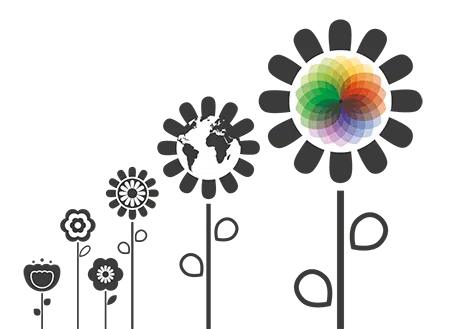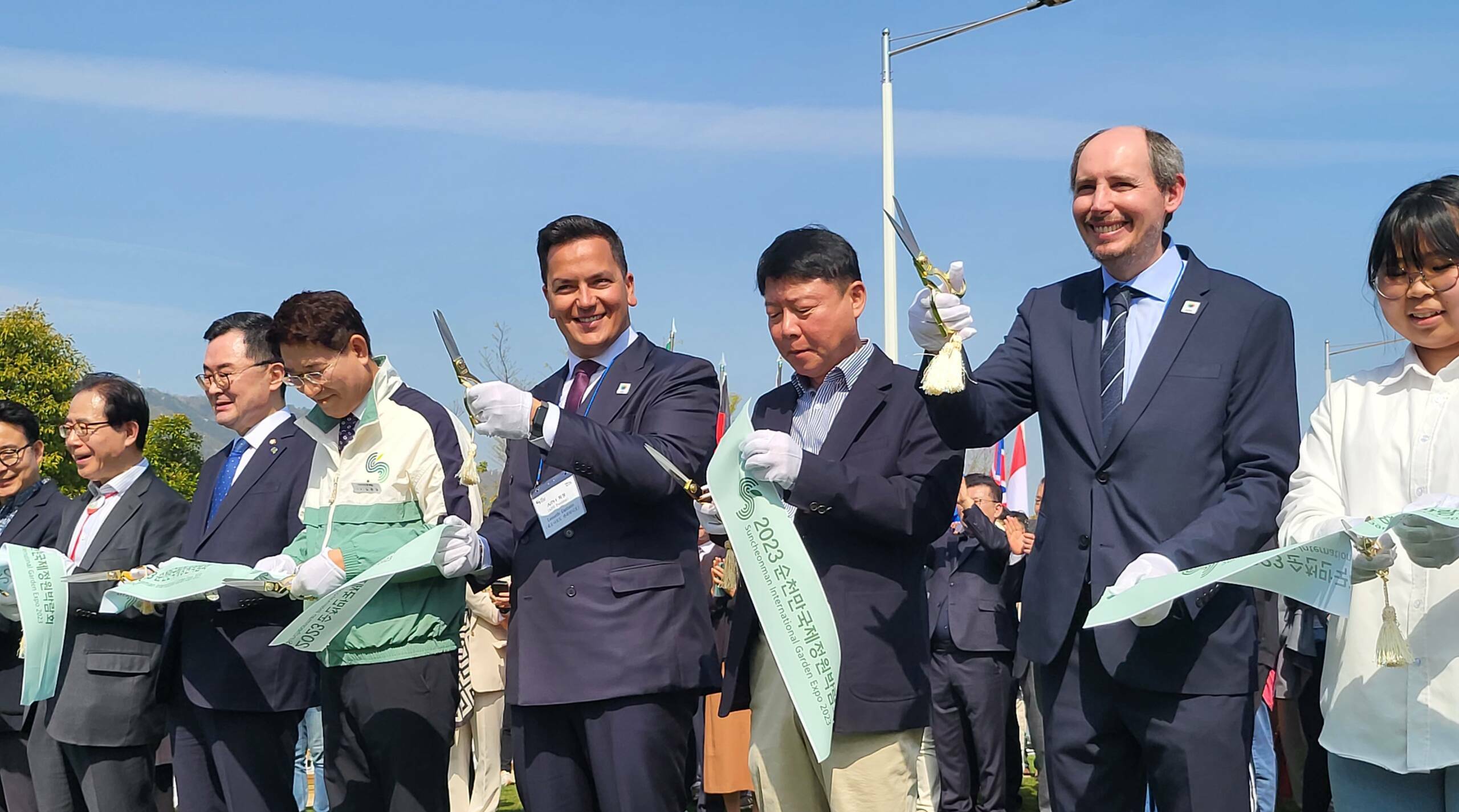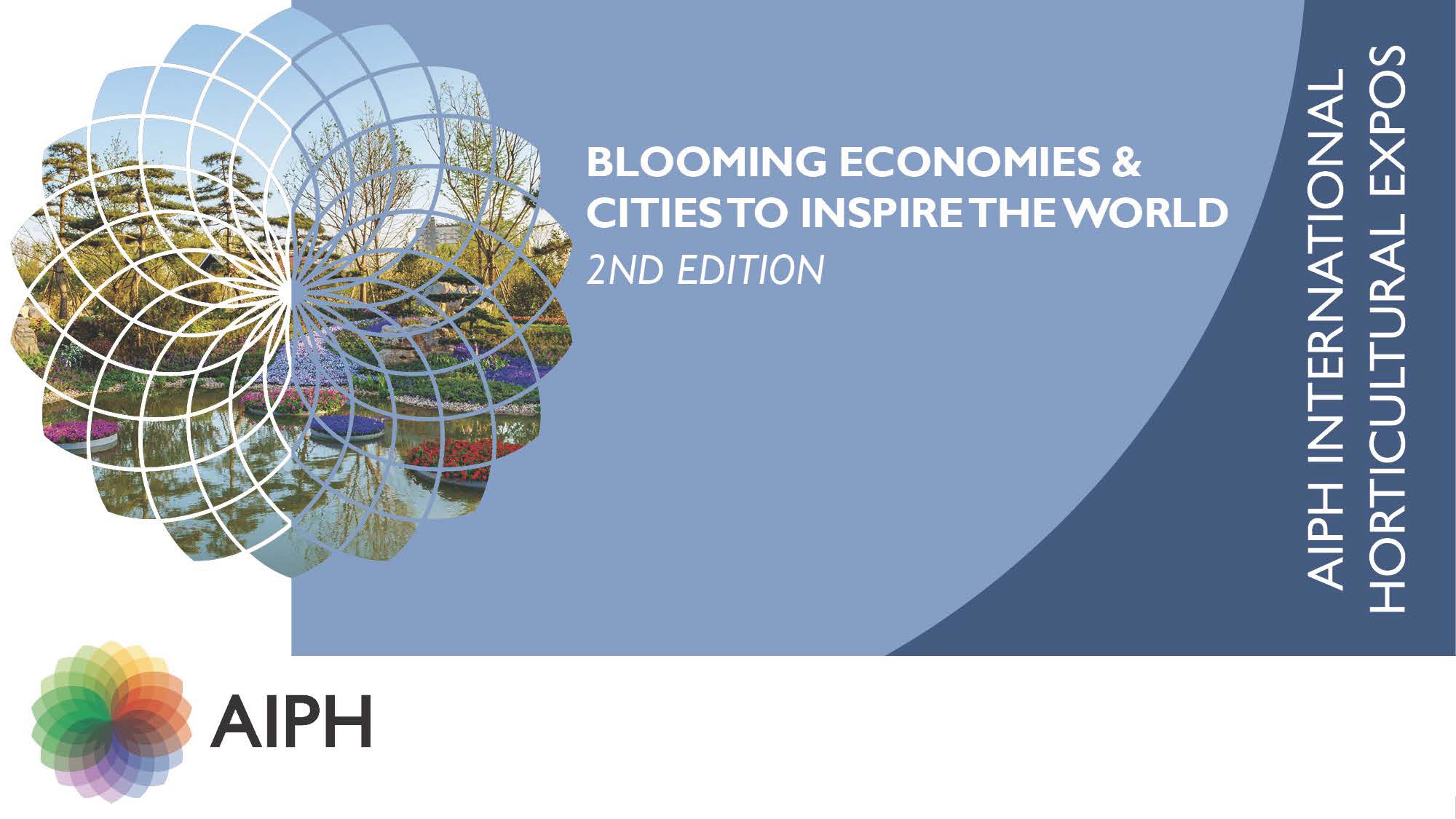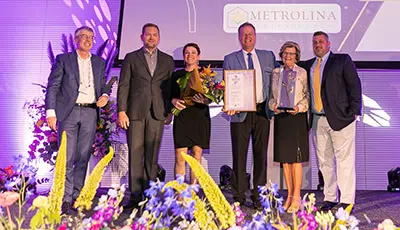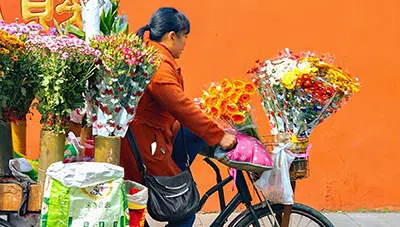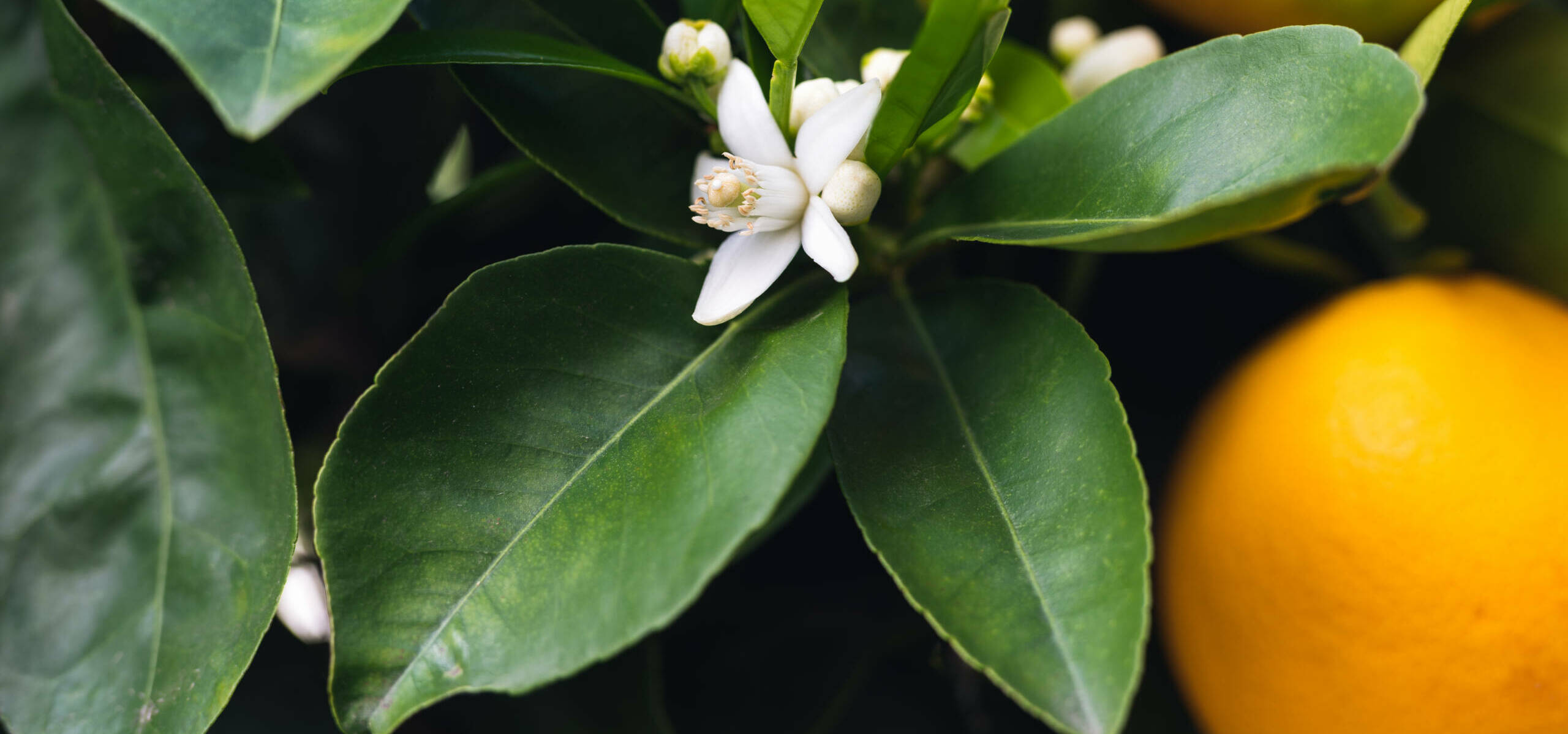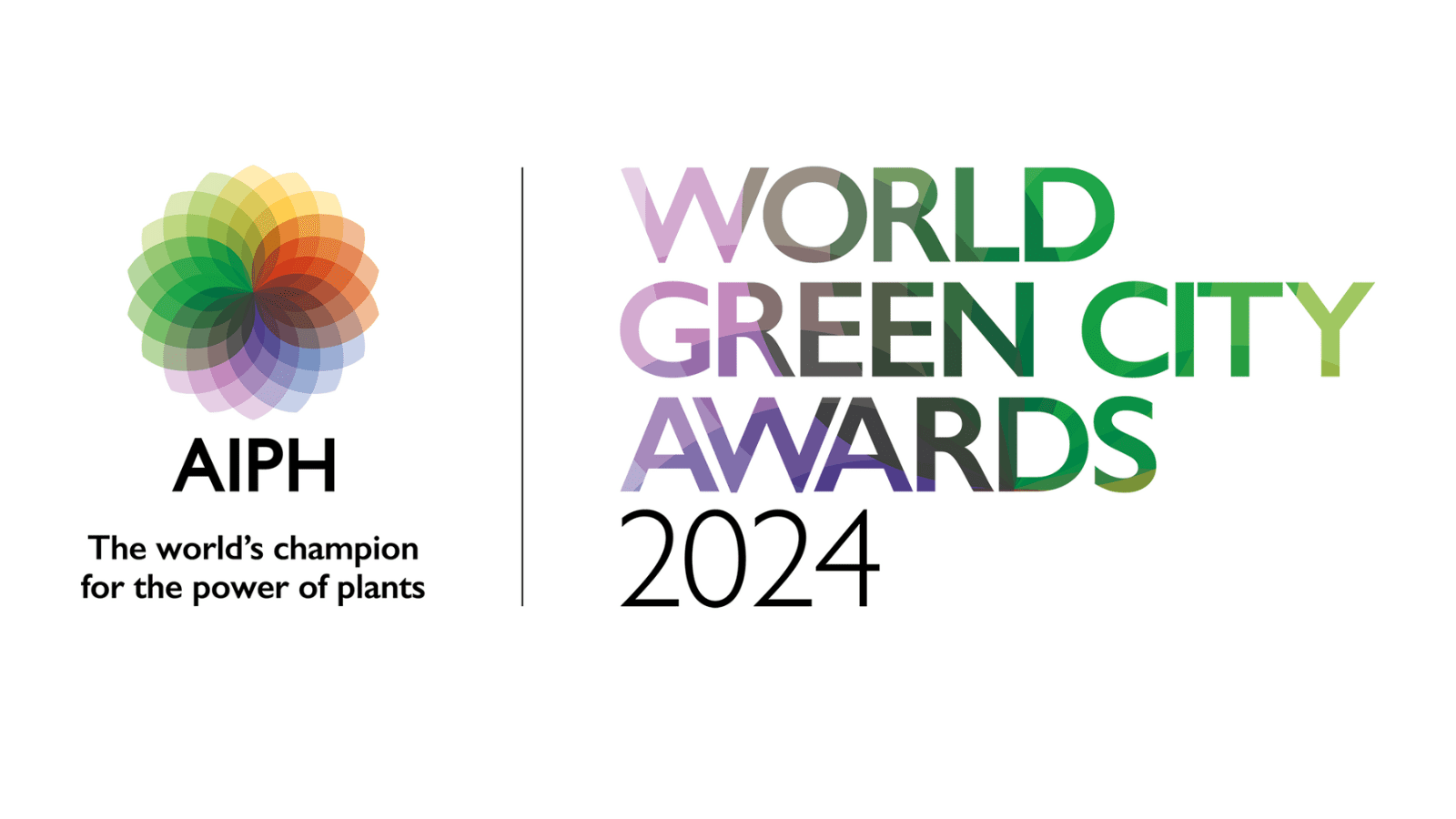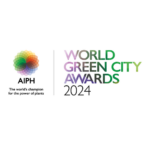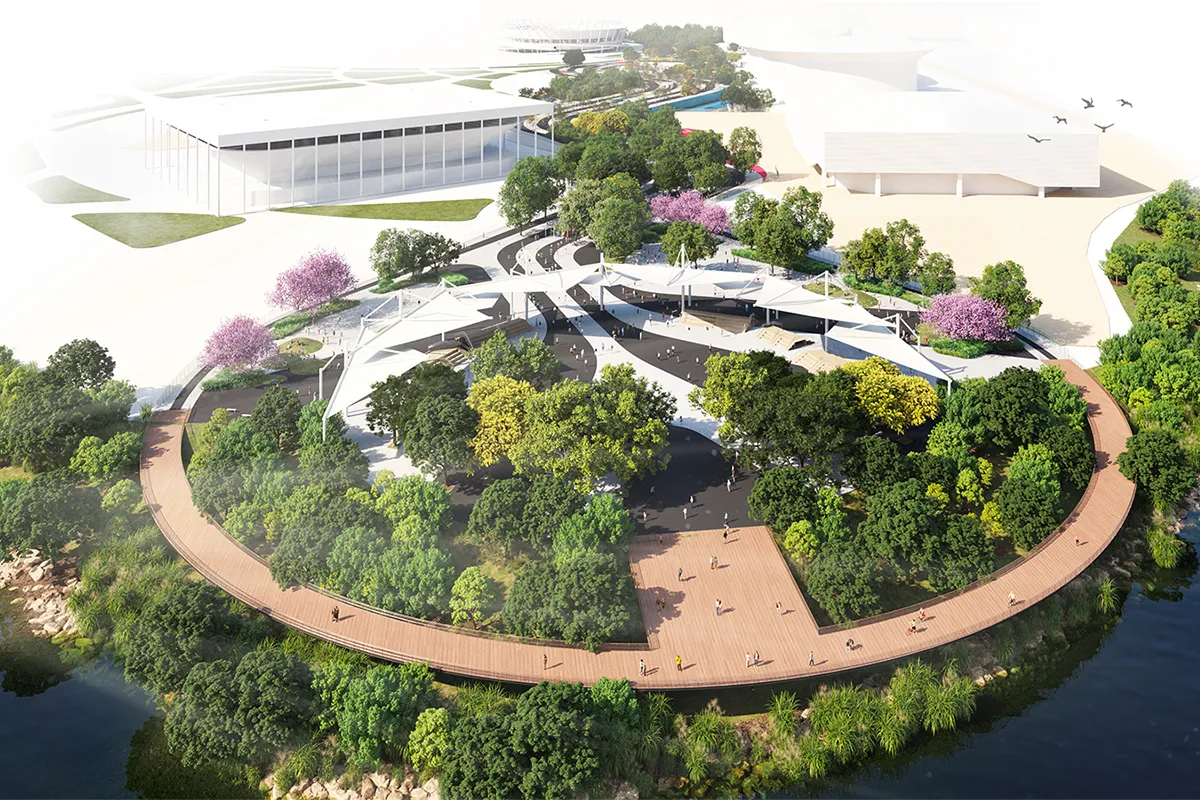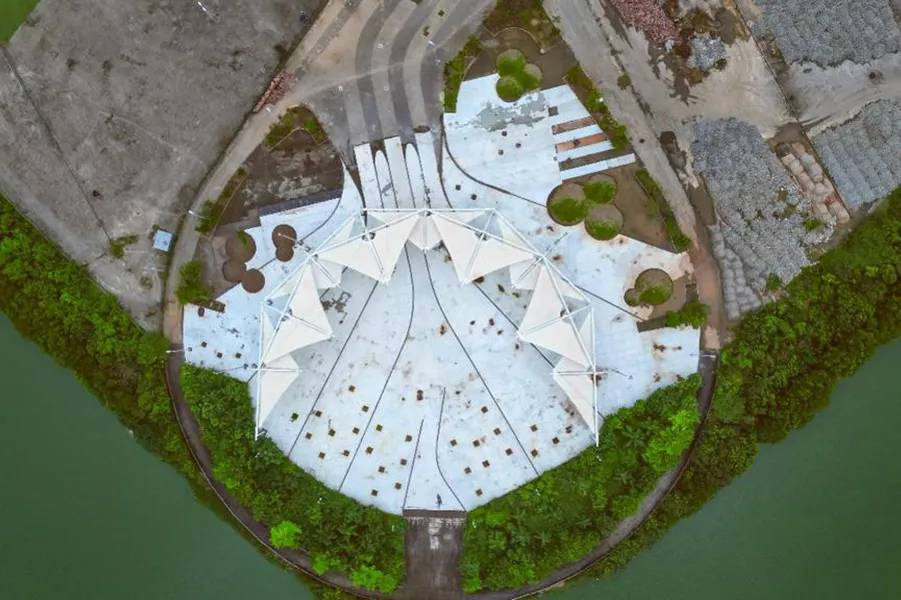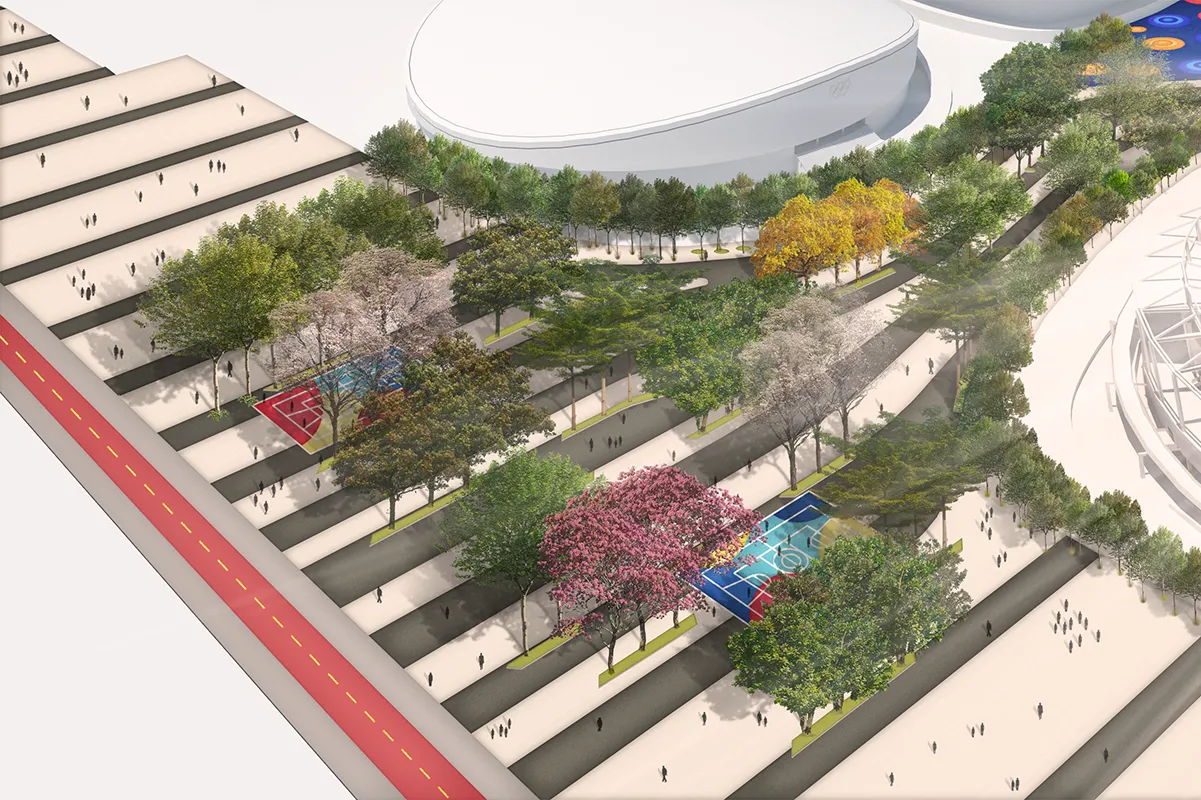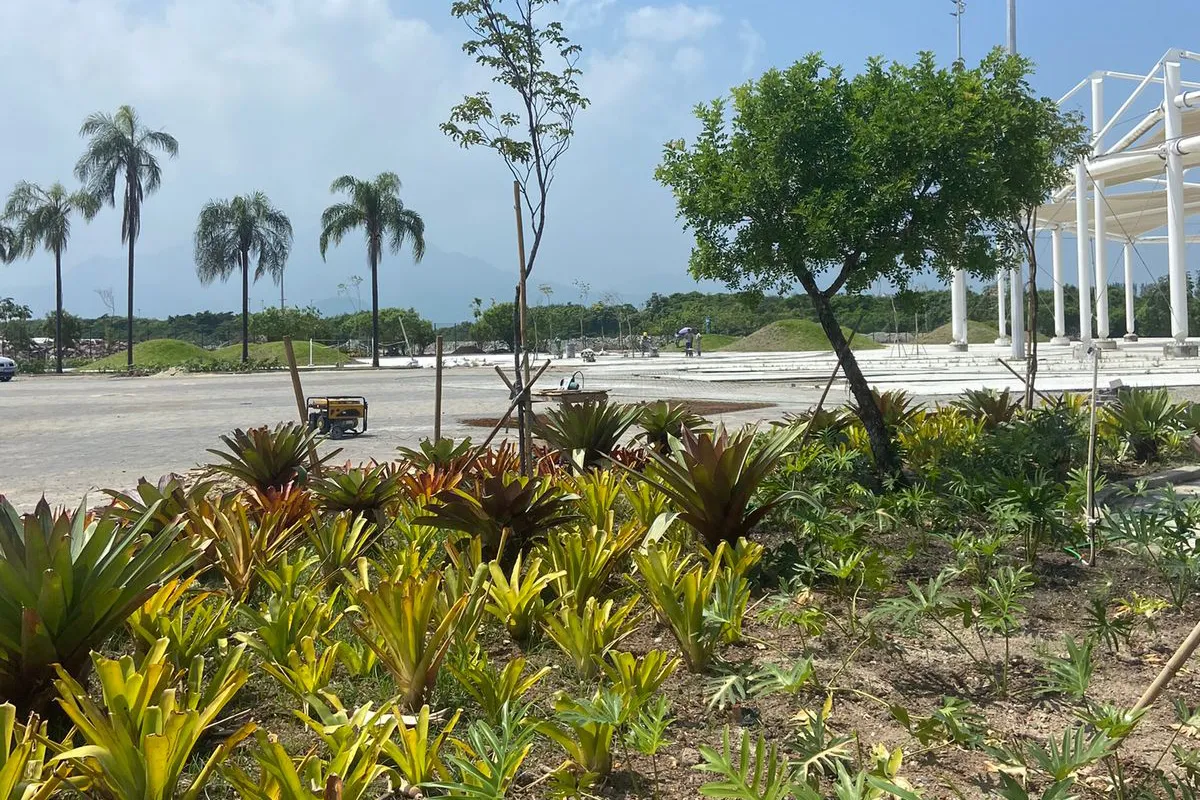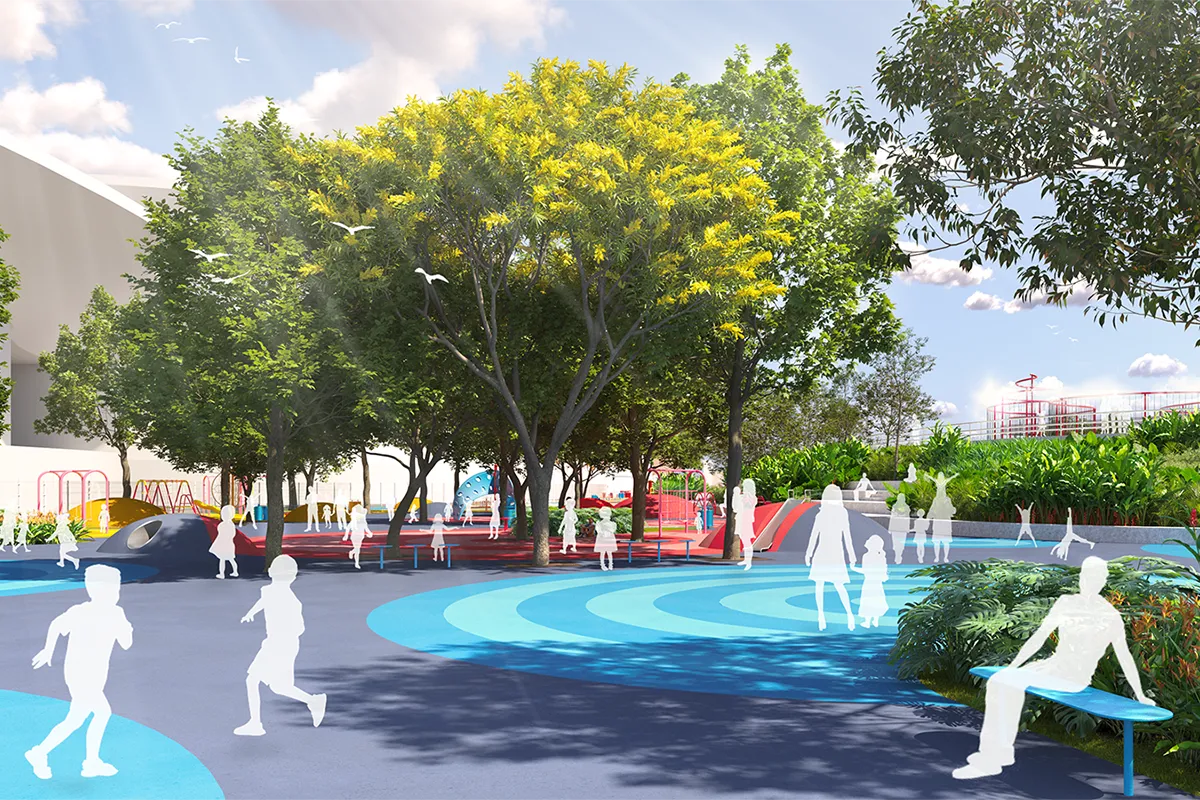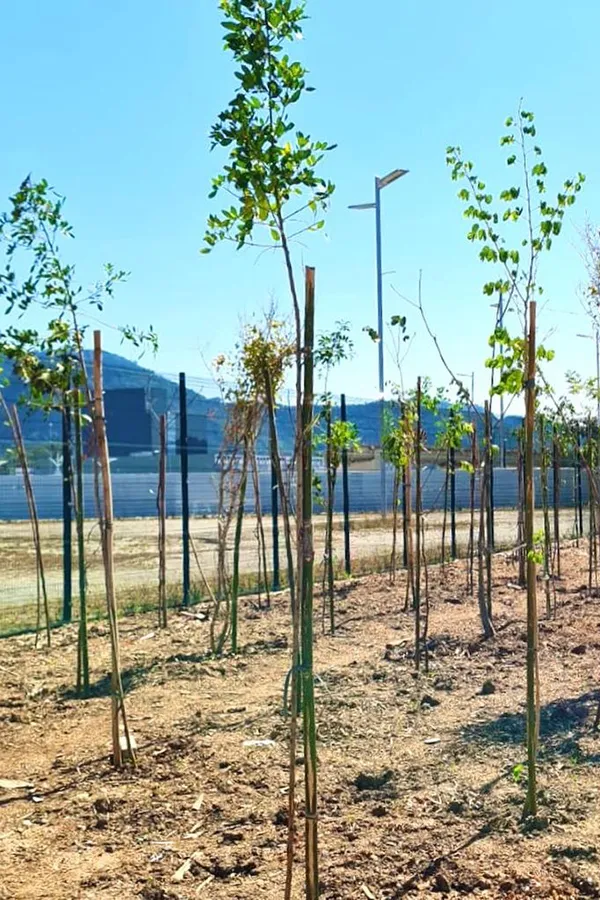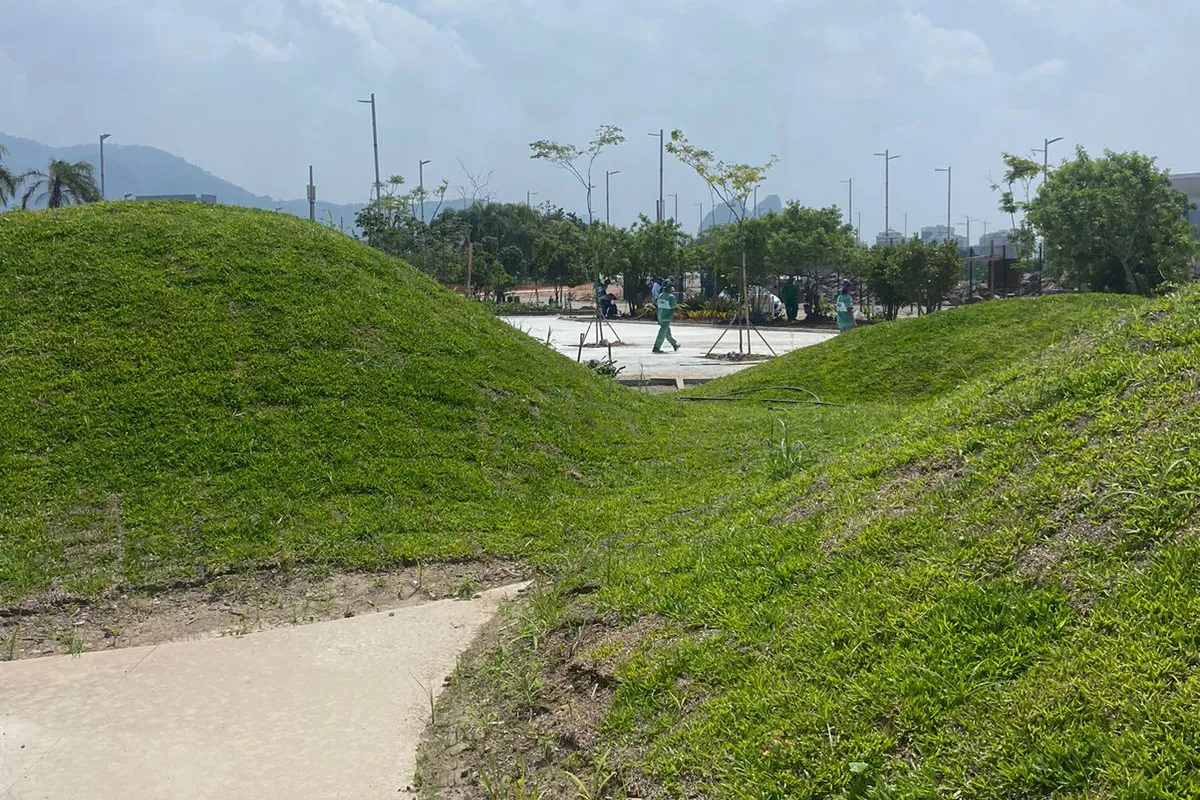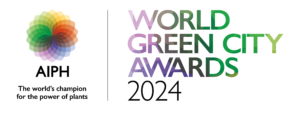Benefits of Urban Greening
Harnessing the Power of Plants
In the reality of landscape and nature, the project is part of a system of green and blue areas in the city of Rio de Janeiro that seeks to reverse the damage caused by the extensive urbanisation process in the western zone since 1969, which transformed the coastal ecosystem into a highly urbanised area and fragmented the local landscape. This system aims to connect these fragments and reestablish important ecosystem interactions between local fauna and flora. The project also utilises Nature-Based Solutions to promote local-scale benefits and reconnect residents with nature, encouraging awareness of the nature-biodiversity-society relationship, particularly regarding ecosystem goods and services.
The project also relies on phytoremediation processes of plants and the absorption and storage capacity of green infrastructure through rain gardens as mitigation measures for environmental issues such as flooding and inundation caused by soil impermeability.
Rio de Janeiro is in the process of reintroducing its forests and rivers within the city, an innovative and necessary proposition in Brazil, a country that for many years relied on a progressive and modern mindset that did not consider nature as an integral part of the future of cities. Therefore, the Rita Lee Park is part of this process and will serve as a model for the redefinition of urban spaces more integrated with nature.
Delivering Multiple Benefits
Rio de Janeiro is situated in the Atlantic Forest biome, the biome with the greatest diversity of fauna and flora on planet Earth. Due to rampant urbanisation in the city of Rio in recent centuries, nature has suffered extensive degradation to make way for the city.
The Rita Lee Park is located in Barra da Tijuca, a neighbourhood in the western zone of Rio de Janeiro, on the shores of Jacarepaguá lagoon. Naturally, this area was a marshy region and today serves as an important refuge and habitat for wildlife.
As a principle of the landscape architecture firm responsible for the project, Ecomimesis, Nature-Based Solutions were implemented, seeking social, environmental and economic benefits to mitigate challenges related to climate change, resource availability, environmental quality and socioeconomic issues on different scales. Consequently, all planted species used are native to the Atlantic Forest. 30 tree species were proposed, divided into 672 new individuals, along with 16 shrub and ground cover species, totalling more than 128,000 new seedlings located in large flowerbeds, rain gardens and wooded areas. The landscape design aims to attract wildlife, mitigate heat islands, increase the park’s permeable areas, reduce the risk of flooding, extend the Marginal Protection Strip into the Park and increase the area’s evapotranspiration rate.
The Rita Lee Park serves as an example of what the City of Rio de Janeiro’s government has been striving for in terms of climate change mitigation and prioritising the wellbeing of the population through the creation of high-quality public recreational areas.
The City’s Bold and Innovative Vision
The Rita Lee Park project aims to enhance social and urban relationships with the emblematic ecosystem of the Western Zone of Rio de Janeiro, the lagoons. The goal is to create a space for interaction among residents with greater potential for use and activities in the area.
The park is developed in sectors with distinct characteristics, allowing for a variety of user experiences. The proposal strengthens the relationship between humans and nature through initiatives that value the local ecosystem through the use of native plants and the expansion of green areas in an already highly urbanised region. At the same time, it features an innovative and modern design, using colours and playful equipment to attract visitors.
The project’s main concept is based on the understanding that two types of parks are possible and necessary within one:
a) The Olympic Way, a large 60-metre-wide thoroughfare created during the 2016 Rio Olympics to accommodate the large influx of people during the games, is seen as a linear park with a smooth and continuous path, offering shaded areas and rest spots. This route involves a process of redefining the place for the benefit of the community.
b) Areas adjacent to the Olympic Way are viewed as a unique and innovative urban park with recreational and leisure areas, furnishings, equipment and colourful floor designs, aiming to attract users to a modern and unusual space in the city. The urban park has a strong and unique local identity compared to other parks in the city.
Partnerships and Collaboration
The Rita Lee Park was created from the legacy of the Olympic Park, which hosted the 2016 Olympic Games in the city of Rio de Janeiro. The legacy aims to transform the Olympic Park into a public urban park and interfaces with various disciplines and sectors, such as education, culture, sports and leisure, infrastructure, environment, and urban planning. The Park serves as the gateway to facilities that will host former sports arenas, such as public schools, museums, entertainment areas, and cultural and sports spaces.
In Rita Lee Park, a sports complex, playful children’s areas, a children’s water park, sports courts, an area with board games, a climbing wall, a skatepark, lounging and leisure areas, and a senior citizens’ gym have been designed. It also includes stands for small events, public restrooms, pergolas as covered areas, urban furniture, space for fairs and food trucks.
Various private professionals collaborated on the project, including civil engineers, surveyors, biologists, hydraulic engineers, electrical engineers, architects, artists, as well as urban planners and landscapers.
Furthermore, its implementation involves several departments of the City Hall, with professionals from various areas: Municipal Secretariat of Government Coordination, responsible for managing the Olympic Legacy, with its Companhia Carioca de Parcerias Publico-Privadas, Secretariat of Urbanism, Parks and Gardens, Culture, Infrastructure (works), Prosecutor’s Office, Education, Sports and Leisure. The Private Sector also participates through the owners of part of the Olympic Park area.
Addressing Urban Challenges
The Issue
During the Games, the Olympic Park was meticulously designed to ensure the safety and unrestricted movement of over 150,000 spectators, especially during peak days. However, it was the post-games phase that truly set this project apart. In the aftermath of the 2016 Games, the Olympic Park’s legacy projects came to an abrupt halt in 2017, primarily due to political issues. Over the subsequent years, from 2017 to 2020, only minimal efforts were made to sustain community activities, such as sports classes within one of the venues. The situation was further compounded by COVID-19 pandemic, which exacerbated delays, leaving citizens and stakeholders deeply concerned.
The transformation of these sprawling spectator areas into a lush, green linear park for the local community was nothing short of visionary. This forward-thinking landscape strategy breathed new life into the site, epitomising the concept of a “Games to Legacy” approach. Rita Lee Park emerged from a strategic vision that sought to reintegrate the natural forests of the biome into the urban fabric. It also demonstrated the potential for large-scale Olympic structures to evolve into vibrant, health-promoting public spaces. The park now stands as a testament to the harmonious coexistence of nature and recreation, serving as a bridge between urban life and the local ecosystem.
The Impact of the Issue
Our work was driven by a commitment to prevent urban spaces from falling into disuse or marginalisation post-Games, a fate suffered by many similar venues worldwide. The implementation of this project was vital to preserving the historical significance of this public space, ensuring that residents could continue to enjoy sports and cultural activities in a setting that marries history and sustainability. Rita Lee Park yields profound social and environmental benefits, fostering a healthy lifestyle that resonates with the spirit of Rio de Janeiro. It exemplifies a commitment to the wellbeing of residents and the sustainable future of the city, mirroring the essence of Rio itself.
A Nature Orientated Future
A turning point came in November 2020 with new elections, reigniting hope for the legacy plans. Thus, Rita Lee Park plays a pivotal role in embodying a dual strategy. It not only returns the area to the people but also rejuvenates it by introducing native vegetation, reclaiming a space that has been in decline since the 1970s. By 2024, this transformed green park, adorned with endemic species from the Atlantic Forest, will offer fresh landscape for enjoyment.
On sunny days, the park’s abundant trees will cast cooling shadows along the boulevard, creating serene spots for contemplation and connection with the surroundings. The integration of native vegetation aligns with a broader strategy aimed at reconnecting the city with its forests and mitigating the climate’s impact on citizens’ lives. In the vicinity of Rita Lee Park lie numerous closed residential condominiums, making it an inviting space for residents to interact with people from across the city and even tourists. The park serves as a hub for cultural and sporting events, enhancing the outdoor experience and fostering a stronger sense of community and appreciation for nature.
Nature Positive Solutions
Implementation
In 2017, following the conclusion of the Games, a change in municipal leadership had a profound impact on the city’s future. The new administration opted not to allocate funds for the preservation of the Olympic Park’s legacy, resulting in the abrupt halt of the ambitious legacy projects.
Four years later, after new elections, a renewed commitment to the Olympic Park’s legacy emerged. The municipality took charge of the revitalisation efforts, inheriting responsibility for AECOM’s preliminary projects. This shift allowed local municipal teams to breathe life back into the Olympic Park vision, ensuring its alignment with the city’s unique character.
One prime example of this renewed dedication is the transformation of Parque Rita Lee. Ecomimesis, conducted thorough studies, paving the way for an impressive urban renewal project. Currently, the area is a hub of construction activity led by Fundação Parque e Jardins, closely supervised by the Municipal Secretary of Government Coordination.
Expected to be completed in 2024, this revamped landscape will blossom into a lush oasis, adorned with endemic species from the vibrant Atlantic Forest. It will serve as both a symbol of the city’s commitment to preserving its natural heritage and a picturesque recreational space for its residents. The resurrection of the Olympic Park legacy signifies a resurgence of hope, reigniting the city’s spirit of progress and renewal.
Feasibility
Rita Lee Park is currently undergoing construction under the supervision of the City Hall, with a scheduled delivery date set for 2024. This project holds a place of strategic importance within the city, and the Mayor is personally overseeing the investments to ensure its successful realisation. Furthermore, plans are underway to establish a new concession arrangement through a Consortium Urban Operation, that will safeguard the park’s conservation and contribute to achieving long-term objectives. The intention is to create a model that not only preserves the park’s natural beauty but also serves as a global benchmark for environmental sustainability and its vital role in Rio’s reconciliation with the legacy of the Games.
In essence, Rita Lee Park’s development signifies a commitment to environmental responsibility and social significance, underscoring the city’s dedication to preserving its historical and Olympic heritage.
Multi-Stakeholder Support
The City Hall of Rio de Janeiro is actively engaged in the development of a series of parks spread across different areas of the city. These include Rita Lee Park in Barra da Tijuca, Realengo Park, Cesário de Melo Park in Campo Grande and Piedade Park.
Rita Lee Park, situated in Barra da Tijuca, is already in the construction phase and is scheduled to open its doors to the public in June 2024. The City Hall is spearheading a collaborative effort that involves multiple sectors within the municipality, all operating under the watchful eye of the Governmental Coordination. This cross-disciplinary approach encompasses various domains, including urbanism, infrastructure, culture, landscape architecture, sports, legal matters and licensing.
Additionally, the private sector is actively participating and giving support to design a Consortium Urban Operation, that will safeguard the park’s conservation upon its activation.
Furthermore, designers, architects, engineers, landscape architects, lawyers, technical personnel and gardeners are all contributing their expertise and skills to make these parks a reality.
Rita Lee Park is not just a green space; it is a vibrant community hub. The local residential communities are set to benefit from an array of sports, educational and cultural programs, making the park an invaluable asset to the city. This park promises a plethora of opportunities for residents and visitors to immerse themselves in the beauty of nature and the serenity of the lagoon, fostering a stronger sense of community and wellbeing.
Management and Maintenance
The Olympic Park Revitalisation Project has adopted the “Operação Urbana Consorciada” (Consortium for Urban Operation) as a key instrument in its implementation. Under this arrangement, Rita Lee Park is set to be both maintained and activated by the private sector for a substantial period of 35 years.
This innovative approach signifies a strong public-private partnership where the private sector assumes responsibility for the park’s upkeep and activation. During this extended period, the City Hall will maintain a crucial oversight role, actively managing and inspecting the operator’s activities. This collaborative framework ensures that the park not only receives the necessary care and maintenance but also remains aligned with the city’s broader vision for urban development and public recreation.
By leveraging the strengths of both the public and private sectors, this approach aims to create a sustainable and vibrant park environment that continues to benefit the local community and enhance the city’s overall urban landscape. Rita Lee Parque, under this model, stands as a testament to the power of innovative urban planning and cooperation in achieving long-term goals for the city of Rio de Janeiro.
Measuring and Reporting Impact
Monitoring Results
The Municipal Urban Information System in Rio de Janeiro plays a crucial role in streamlining public administration and supporting municipal policies. Its primary goal is to collect, manage, integrate and continually update a comprehensive dataset about the city. This repository of information fosters efficient communication among municipal bodies, promoting cohesive efforts in support of public policies.
DATA.RIO, generated from this system, provides a wealth of data, statistics, maps and other valuable information. It is used internally by the City of Rio de Janeiro to plan and manage various public services effectively. The data can also be accessed through the WEB by communities and universities.
One significant benefit of this data-centric approach is the ability to measure progress and assess the impact of initiatives. By comparing data on patients in public healthcare facilities before and after the creation of new green spaces, the city can evaluate improvements in citizens’ mental health. Monitoring air quality and noise levels before and after park implementation aligns with scientific findings that peaceful public areas enhance mental wellbeing.
Many cities recognise the value of investing in public spaces to alleviate the burden on healthcare resources, improving residents’ quality of life while potentially reducing healthcare costs.
Additionally, Rio de Janeiro is actively addressing climate change and resilience through its Climate Action Plan, supported by the C40 Cities. This underscores the city’s commitment to tackling global environmental challenges through data-driven strategies, scientific research, and international collaboration, ultimately building a more sustainable and resilient future for its residents.
Demonstrating Progress
The process of closely monitoring projects and their various phases is an invaluable practice that offers several significant benefits. Firstly, it allows for real-time corrections during implementation, instilling confidence within the project team and among citizens. This transparency and adaptability fosters trust and ensures that the project remains on the right track.
Furthermore, continuous monitoring of a project piques the interest of potential partners, including those from the private sector, other government levels and financial agencies. These stakeholders are more likely to engage when they can witness the project’s progress and its alignment with their interests and goals.
Monitoring encompasses all stages of the project, from planning and construction to its everyday use by citizens once it’s open. This comprehensive approach provides essential insights and knowledge, enabling project managers to fine-tune strategies and make data-driven decisions.
Throughout the implementation phase, Rio’s Project Management Office (PMO) plays a pivotal role. It meticulously manages risks and updates financial and physical schedules on a weekly basis. This transdisciplinary perspective ensures that every aspect of the project, from its financial health to its risk mitigation strategies, remains in focus and is addressed promptly.
In essence, the practice of continuous monitoring not only enhances project management but also reinforces accountability, builds partnerships and promotes efficient decision-making, all of which are crucial for the success and sustainability of complex initiatives.
Measuring Impact
The implementation of the project incorporates a robust approach that combines both quantitative and qualitative methods for comprehensive evaluation. The City of Rio’s Project Management Office (PMO) plays a pivotal role by providing regular updates on risk management, and financial and physical schedules on a weekly basis. This approach ensures a holistic, transdisciplinary view throughout the project’s lifecycle.
Quantitative data collection is a key component of this approach. Metrics such as the number of new trees planted and the area of new vegetation are diligently recorded. Additionally, air quality and sound levels are quantitatively measured before and after the park’s creation. These quantitative data points enable cross-referencing with other datasets, such as health-related information.
For instance, by examining data on the prevalence of depression and the utilisation of public hospitals, the project can assess whether the establishment of more green areas has had an impact on reducing the demand for healthcare services related to mental health. This holistic analysis allows for evidence-based conclusions regarding the project’s effects on public health and wellbeing.
The integration of both quantitative and qualitative methods in project evaluation underscores the commitment to thorough and data-driven decision-making. It ensures that the project’s goals are not only met but also contribute positively to the overall quality of life for the city’s residents. This approach exemplifies a modern, evidence-based approach to urban development that can lead to more sustainable and healthy communities.
Learning and Transferability
Adaption and Enhancement
The project’s evolution demonstrates its adaptability and responsiveness to feedback and changing needs. A significant adjustment involved the inclusion of public bathrooms, a feature initially overlooked. Engaging with the private sector provided valuable insights into the community’s needs, highlighting the importance of such facilities.
Similarly, the project’s materials underwent changes following prototype testing. This interactive approach ensures that the final product aligns more closely with practical requirements and sustainability considerations. By continuously refining the project based on real-world feedback and testing, it becomes more effective, efficient, and capable of meeting the evolving demands of the community and its stakeholders. This commitment to flexibility and improvement is a hallmark of successful, forward-thinking urban development initiatives.
During the design process meetings with the private sector also brought specific changes that improved the relationship between public space and private lots, ensuring that design solutions also reflect the demands of future activation and maintenance.
Likewise, joint work with the future managers of GEO – Public School and the Olympic Museum also took place and contributed to achieving the most appropriate access solutions through the park.
Potential for Replication
We are currently in the midst of a transformative implementation phase. Our mission in Rio is laser-focused on the monumental task of transplanting forests from the mountains to the heart of the city, all while striving to bolster resilience and mitigate the far-reaching impacts of climate change. Simultaneously, we are committed to the principle of equitable access to high-quality public spaces for all our citizens.
One remarkable exemplar of our vision is Parque Rita Lee. This urban oasis stands as a prime illustration of how a constructed environment can undergo a remarkable metamorphosis, becoming not only healthier but also greener and infinitely more enjoyable for residents and visitors alike.
Parque Rita Lee’s transformation is emblematic of our broader commitment to urban sustainability. By infusing life into this once-ordinary space, we have demonstrated that even within a bustling metropolis, nature and human harmony can coexist harmoniously. In the future, the park will serve as a testament to our resolve to create urban landscapes that foster both ecological vitality and the wellbeing of our diverse community.
Inspiring Other Cities
We have the potential to set a shining example of resilience. Nestled within our stunning biome lies an extraordinary tapestry of diverse fauna and flora, making Rio a true natural wonder.
Rio de Janeiro’s unique way of life has already established itself as a model for other cities throughout Brazil and Latin America. The fusion of our Olympic experience with our ongoing biome restoration efforts is a powerful source of inspiration and offers a promising path toward preparing our city for a more sustainable climate.
Indeed, other cities can draw invaluable lessons from Rio’s journey. We stand ready to extend our support to initiatives in different municipalities, offering information and consulting based on our own experiences and hard-earned knowledge. As the first Latin American city to host the Olympics, Rio’s Olympic Park and its legacy plan are still unfolding, serving as an exciting area of study for researchers and other urban centres seeking guidance.
Moreover, Rio boasts the world’s largest Urban Forest, and we have comprehensive legislation in place to regulate and protect this invaluable resource. Our commitment to reforestation dates back to the 1990s, underscoring our dedication to preserving the environment for current and future generations. Rio’s story is not only one of resilience but also a testament to the profound impact a city can have when it harmoniously blends urban development with nature conservation. Many cities can learn from our process.
Resilience
Reducing Negative Impacts and Ensuring Sustainability
Recycling materials from the games without compromising quality and selecting the right construction materials with recyclable content is important to achieving embodied carbon savings. For example, the use of recycled aggregates, eco-friendly concrete options, reclaimed structural steel, FSC-certified wood or other innovative carbon-negative materials such as plant-based insulation help to sequester carbon and reduce its embodied content in materials. Certified sustainable materials were sourced from supply chains that have committed to transparent product environmental actions and that operate a net-zero carbon business.
Moreover, Rio boasts the world’s largest Urban Forest, and we have comprehensive legislation in place to regulate and protect this invaluable resource. Our commitment to reforestation dates back to the 1990s, underscoring our dedication to preserving the environment for current and future generations. Rio’s story is not only one of resilience but also a testament to the profound impact a city can have when it harmoniously blends urban development with nature conservation.
Environmental Considerations
Since the Olympic Games, we’ve implemented innovative sustainability measures, such as utilising recycled rainwater for our gardens and sewage systems. FSC-certified wood and innovative carbon-negative materials were also used. These initiatives were strongly mandated by the Olympic International Committee (OIC).
Notably, Parque Rita Lee will play a significant role in repurposing a substantial portion of the Games’ infrastructure, showcasing our commitment to sustainability. This includes efficient lighting solutions and the use of recycled water, exemplifying our dedication to minimising our environmental footprint.
Furthermore, our approach to landscaping incorporates a thoughtfully curated selection of native plant species. These species have been strategically placed in locations where they can flourish without encountering soil-related challenges or requiring excessive maintenance. This sustainable landscaping not only enhances the park’s aesthetic appeal but also promotes biodiversity and ecological harmony within our urban environment. Our vision is to create green spaces that seamlessly blend with the natural landscape while preserving the delicate balance of our ecosystem.
Use of Natural Resources
The Olympic Park stands as a compelling case study in sustainability, offering inspiration through its remarkable transformation. Witnessing the conversion of the Olympic Games Way into a lush, tree-lined park, teeming with vitality and offering spaces for sports and leisure, is a testament to the power of nature-based revitalisation. This metamorphosis promises to usher in a new microclimate, fostering a harmonious blend of urban and natural elements.
Our city’s potential is boundless, and from the outset of our government, we’ve diligently sought to identify its unique strengths and opportunities. We are unwavering in our commitment to create an environment that encourages private sector development in these sectors. In Rio, the environmental cause transcends mere sustainability; it is intrinsically tied to our economic vitality.

